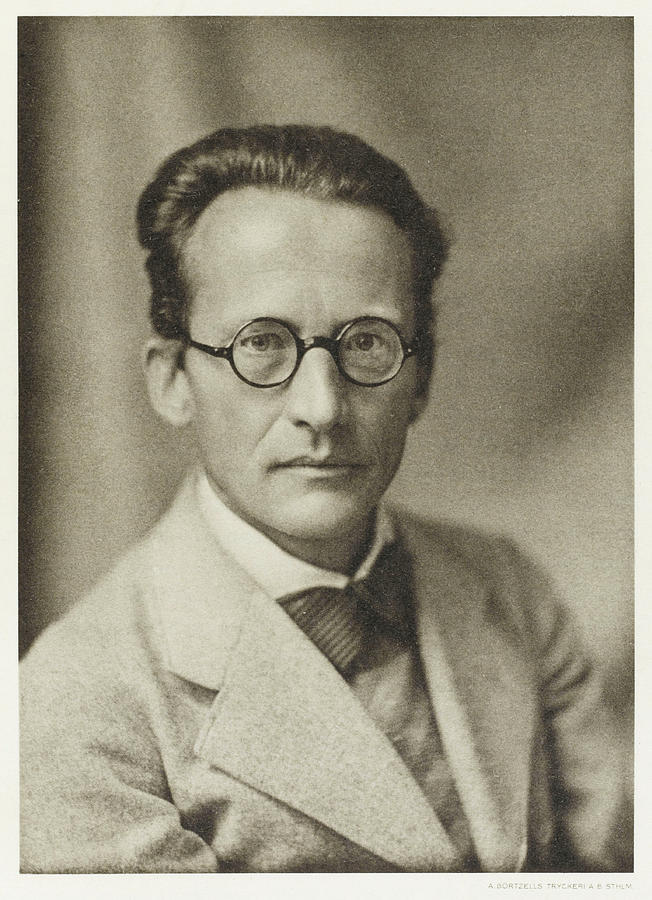To schedule a consult, please click here or call us at (703) 429-1906.

To schedule a consult, please click here or call us at (703) 429-1906.

Starting in August 2020 and continuing through to 2025 (the International year of Quantum Science and Technology), Boyle PLLC
will feature a scientist or event notable in the history of the
development of quantum mechanics. For the month of September 2020,
Boyle PLLC is pleased to highlight the life of Erwin Schrödinger.
Previous and subsequent features can be found here
.

Erwin Schrödinger in 1933, the year he shared the Nobel Prize in Physics with P.A.M. Dirac
. Photograph: Nobel foundation.
Erwin Schrödinger was born August 12, 1887 in Vienna, Austria to Rudolf and Georgine Schrödinger. Through his parents, Erwin—an only child—had both a scientific and familial pedigree to a well-known Austrian chemist: Alexander Bauer. Georgine, his mother, was the daughter of Alexander Bauer, and Rudolph, his father, had been a student of Bauer's. In 1906, Schrödinger entered Vienna University, where he studied physics under Franz Exner and Friedrich
Hasenörl. In 1910, Schrödinger graduated from Vienna University with a Ph.D.
In 1911, after a year of military training, Schrödinger returned to the University of Vienna, and by 1914 he had earned a position as Privatdozent—the first rank in the academic hierarchy of the day. Between 1914 and 1918, Schrödinger was called to military service for the Austrian Fortress Artillery in World War I, and received a citation for valor in the Battle of Isonozo on the Italian Front. During the postwar economic difficulties in Europe, between 1918 and 1920, Schrödinger authored scientific papers on color theory—a topic that had taken hold of his interest in his youth. In 1920, Schrödinger married Annemarie Bertel, and in 1921 he moved to the University of Zurich.
In the 1920s, Schrödinger started publishing papers on the emerging field of quantum theory. It was while developing an understanding of the quantum statistics of ideal gases that Schrödinger was led to study the 1924 doctoral thesis of study of Louis de Broglie on the wave nature of particles. Inspired, in 1926, at the age of 39, Schrödinger published six papers that forever shifted the foundations of theoretical physics. The first of these six papers, published in January 1926, introduced what is now known as the Schrödinger equation, and demonstrated that eigenvalue solutions to his "wave equation" yield the correct energy spectrum for hydrogen-like atoms. Subsequent published papers provided solutions to: quantum harmonic oscillator problems, problems involving diatomic molecules, and time-dependent problems.
In 1927, Schrödinger succeeded Max Planck as professor of theoretical physics at the University of Berlin in Germany. In 1933, when Adolf Hitler assumed power in Germany, Schrödinger left Germany and took a fellowship position at Oxford University in England. Soon after he arrived at Oxford, it was announced that he and P.A.M. Dirac
would share the 1933 Nobel Prize in Physics "for the discovery of new productive forms of atomic theory." Between 1933 and 1940, Schrödinger moved to and from a variety of academic positions and offers, complicated, in part, by the prewar political situation in Europe. By 1940, Schrödinger was living in Dublin, Ireland, helping to establish the Institute for Advanced Studies in Dublin.
He remained in Dublin for 17 years, returning to Vienna, Austria in 1956. In 1961, he died in Vienna.
Gamow, G. Thirty Years That Shook Physics: The Story of Quantum Theory (Doubleday & Co., New York, 1966).
Moore, W. "Schrödinger, Erwin," MacmIllan Encyclopedia of Physics, Vol. 4 (Macmillan Reference USA, New York, 1996).